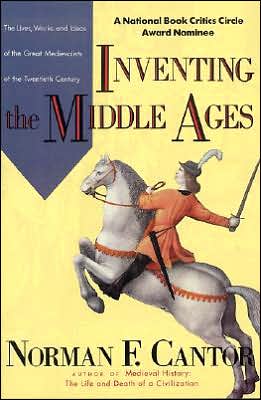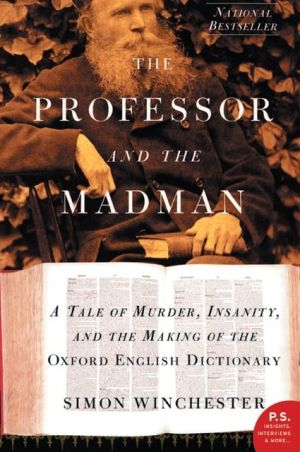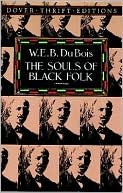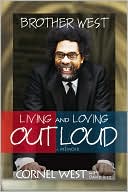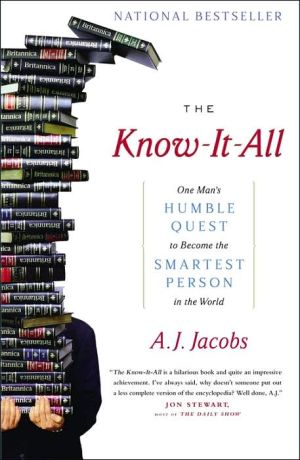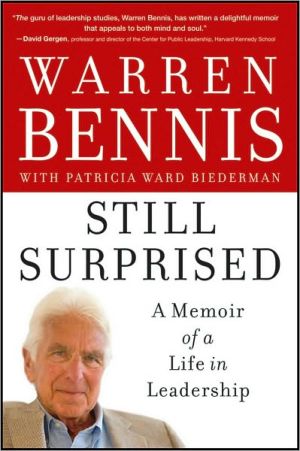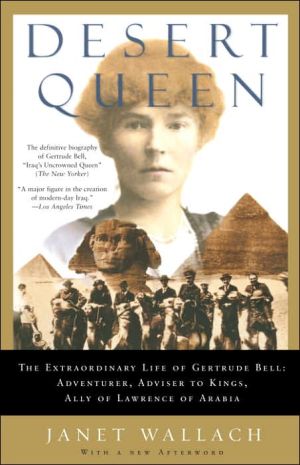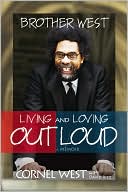Inventing the Middle Ages: The Lives, Works, and Ideas of the Great Medievalists of the Twentieth Century
INVENTING THE MIDDLE AGES\ The Lives, Works, and Ideas of the Great Medievalists of the Twentieth Century\ \ In this ground-breaking work, Norman Cantor explains how our current notion of the Middle Ages-with its vivid images of wars, tournaments, plagues, saints and kings, knights and ladies-was born in the twentieth century. The medieval world was not simply excavated through systematic research. It had to be conceptually created: It had to be invented, and this is the story of that...
Search in google:
INVENTING THE MIDDLE AGESThe Lives, Works, and Ideas of the Great Medievalists of the Twentieth CenturyIn this ground-breaking work, Norman Cantor explains how our current notion of the Middle Ages-with its vivid images of wars, tournaments, plagues, saints and kings, knights and ladies-was born in the twentieth century. The medieval world was not simply excavated through systematic research. It had to be conceptually created: It had to be invented, and this is the story of that invention. Norman Cantor focuses on the lives and works of twenty of the great medievalists of this century, demonstrating how the events of their lives, and their spiritual and emotional outlooks, influenced their interpretations of the Middle Ages. Cantor makes their scholarship an intensely personal and passionate exercise, full of color and controversy, displaying the strong personalities and creative minds that brought new insights about the past. A revolution in academic method, this book is a breakthrough to a new way of teaching the humanities and historiography, to be enjoyed by student and general public alike. It takes an immense body of learning and transmits it so that readers come away fully informed of the essentials of the subject, perceiving the interconnection of medieval civilization with the culture of the twentieth century and having had a good time while doing it! This is a riveting, entertaining, humorous, and learned read, compulsory for anyone concerned about the past and future of Western civilization. Publishers Weekly To 19th-century romantics, the Middle Ages were a justification for aesthetic passion and communal feeling. In contrast, the 20th century's picture of the Middle Ages stresses its synthesis of faith and reason, charismatic leadership of saints and heroes, formalist attitude to art and literature, and ideas of divine and human love. These constructs, argues New York University medievalist Cantor, are the product of such influential medievalists as Frederic Maitland, Erwin Panofsky, C. S. Lewis and Richard Southern. His sometimes provocative study combines intimate profiles of 20 medievalists with an assessment of the impact of their ideas on our image of the Middle Ages. Cantor unravels the ``common man's ethos'' in J.R.R. Tolkien's Lord of the Rings and discusses Eileen Power's searing indictment of the Middle Ages' marginalization of women. He invents his own Middle Ages: one that tells us to reject the ``regulatory and welfare state'' and reassert the values of civil society and ``tough love.'' (Dec.)
Chapter One\ \ \ THE QUEST FOR THE MIDDLE AGES\ \ \ BETWEEN ROME AND RENAISSANCE\ \ \ In France, Germany, and Italy they still call it the Middle Age. In English-speaking countries since about 1840 it is generally referred to in the plural--the Middle Ages--signifying the several distinct suberas during one very long epoch. Whether called by the singular or the plural, the medieval era in Western civilization is the millennium that stretched from the fall of the Roman Empire in Europe (about A.D. 450) to the Italian Renaissance of the late fifteenth century. The question that has engaged the lifetime interest and work of thousands of historians, literary critics, art historians, philosophers, theologians, and archaeologists in modem times is, What happened between Rome and the Renaissance? What was the nature of the European medieval world, and what is its connection to our own?\ Interest in the meaning and relevance of the Middle Ages stretches far beyond academia. Books about King Arthur and his Round Table, both fiction and nonfiction, constitute a thriving cottage industry. In 1978 Barbara Tuchman, a distinguished historian although not an academic, published a best-selling medieval book, A Distant Mirror, that demonstrated to almost universal satisfaction similarities between the troubled fourteenth century in Europe and the more depressing moments of the twentieth century. In 1990 no fewer than three Hollywood film companies almost simultaneously announced they were going to produce a new movie about Robin Hood, to replace the jovial 1938 film that starred Errol Flynn and Olivia DeHavilland, and a new blockbuster film about the mythic medieval hero is now actually in production. Perhaps on a more exalted level of discourse, the papacy in 1987 prohibited a professor of theology at the Catholic University of America in Washington, D.C., from teaching about sexuality in a manner that sharply departed from allegedly authoritative medieval Catholic tradition. Hagar the Horrible, the rambunctious Viking, is a favorite comic strip. Every summer tens of thousands of middle-class Americans climb into tour buses in London, Paris, Frankfurt, Rome, and Vienna and spend a week or two visiting medieval cathedrals and the remains of medieval castles. Curiosity is thereby stimulated about the people who created the world of castle and cathedral.\ In 1984 the English translation of a novel by an Italian professor of medieval literature, The Name of the Rose by Umberto Eco, surprised the New York publishing world by becoming a phenomenal best seller. The popularity of Eco's highly cerebral novel was helped by its being cast in the form of a detective story. Yet the setting was the fourteenth century, and the story is placed in the context of one of the more dramatic conflicts within the medieval church: between the papacy and the radical, or Spiritual, wing of the order of Franciscan friars over the nature of the church and its role in society.\ Asked to explain the phenomenal success of his novel, Eco modestly attributed it "to a period of renewed interest in the Middle Ages . . . both in Europe and America." Another comment by Eco puts it more sharply: "[T]he fact is that everyone has his own ideas, usually corrupt, of the Middle Ages." The huge popular success of Eco's and Tuchman's medieval books gave new attention to the ideas held about the Middle Ages by the leading academic medievalists of the twentieth century, whose research and insight the two best-selling authors had freely drawn upon. Specifying parallels between the agonies of the fourteenth and twentieth centuries or setting a brilliant detective story within the conflict between the papacy and the Spiritual Franciscans was only a small sliver of the medieval European experience that stretched for a millennium beyond the fall of the Roman Empire. Which additional interpretations or fascinating data loom strongly out of the work of three generations of medievalists since 1900? Which were the colossal personalities and dramatic crises that the medievalists had revealed? What further parallels or contrasts could be drawn between the Middle Ages and our own culture and society? How do the medieval sensibility, imagination, and faith relate to our own set of assumptions and perceptions? These were subjects broached by sophisticated literary agents and editors as they took luncheons in two-star restaurants with academic medievalists, seeking to find at least one who, like Tuchman (but certanly not Eco), wrote suburban middle-class prose.
\ Publishers Weekly - Publisher's Weekly\ To 19th-century romantics, the Middle Ages were a justification for aesthetic passion and communal feeling. In contrast, the 20th century's picture of the Middle Ages stresses its synthesis of faith and reason, charismatic leadership of saints and heroes, formalist attitude to art and literature, and ideas of divine and human love. These constructs, argues New York University medievalist Cantor, are the product of such influential medievalists as Frederic Maitland, Erwin Panofsky, C. S. Lewis and Richard Southern. His sometimes provocative study combines intimate profiles of 20 medievalists with an assessment of the impact of their ideas on our image of the Middle Ages. Cantor unravels the ``common man's ethos'' in J.R.R. Tolkien's Lord of the Rings and discusses Eileen Power's searing indictment of the Middle Ages' marginalization of women. He invents his own Middle Ages: one that tells us to reject the ``regulatory and welfare state'' and reassert the values of civil society and ``tough love.'' (Dec.)\ \ \ \ \ Library JournalThis book is much broader in scope than the title would imply. Part historiography, part biographical sketches, and part personal memoir, it explores the lives of the 20 scholars (19 men and one woman) whom Cantor perceives as ``the great medievalists'' of the period 1895-1965. His thesis is that Wilsonian idealism, World War II, the Nazi Holocaust, and the Cold War shaped the world views and the interpretations of the European and American scholars studying the Middle Ages. The book is based on Cantor's frequently brilliant, sometimes fanciful (he knew seven personally) analysis of the scholars' works; their obituary notices; and his memory of conversations that took place 40 or more years ago. Strong on the historians (predictably, since Cantor is a historian), respectable on the literary scholars, weak on the art historians, the book contains a mine of information, much of it anecdotal, about those discussed. Bristling with prejudices, judgments (in many cases wrongheaded), and predictions, clever and witty in style, it will command a wide audience in both academia and the informed reading public. For research and general collections. History Book Club selection. -- Bennett D. Hill, George town Univ., Washington, D.C.\ \ \ BooknewsEminent medievalist Cantor explains how the Middle Ages were created in the 20th century, by showing the relationship between the life situation of influential writers and their interpretations of events between the fall of Rome and the Renaissance. In addition to historians such as Marc Bloch and Richard Southern, he considers fantasists C. S. Lewis and J. R. R. Tolkien (but not himself). Annotation c. Book News, Inc., Portland, OR (booknews.com)\ \ \ \ \ Kirkus ReviewsTracing the "quest" for the Middle Ages, Cantor (History, Sociology, Comparative Lit./N.Y.U.; Perspectives on the European Past, 1971, etc.) has drafted a riveting chapter of 20th-century intellectual history. In this penetrating, opinionated, colorful study, Cantor paints sharp portraits of 20 modern medievalists—some heroes, some "authoritarian egoists"—whose research has formed our vision of the Middle Ages. Delving into their psyches and explaining their brilliance and influence, Cantor shows that the writing of history is inextricably bound to the present, that historians like C.S. Lewis, Joseph Strayer (Eisenhower-era Princeton professor who worked for the CIA), or French Resistance hero Marc Bloch projected their personalities and the wider sociopolitical context onto their work. Percy Ernst Schramm and Ernst Kantorowicz's studies of medieval "kingship," written in 1920's Heidelberg, reflect their elitism (Cantor calls them "The Nazi Twins") and the anxieties of the unstable Weimar Republic, just as Frederic Maitland's work on English law breathes the modernism of Eliot and Kandinsky. Passionately involved in the field, Cantor confesses his biases and disappointments—e.g., that his Oxford don Richard Southern (The Making of the Middle Ages) failed to attain the pervasive influence of Marc Bloch, whose Feudal Society was the last half-century's other "most influential" book on medieval history. Never shy to label or judge, or to discuss the dark side of human motivation, Cantor claims that Bloch's "heritage of sanctity....was exploited to build a power-base for his Annalist colleagues and disciples." The Middle Ages, Cantor convincingly contends, has deep affinitiesto the 20th century not only in heritage (church, university, Anglo-American law, etc.) but as "the secret sharer of our dreams and anxieties." His final, fiery call for a "retromedievalism" that "reasserts the freedom of civil society" is extreme but provocative. Engrossing, insightful, and bound to ruffle in its characterizations and its claim for the Middle Ages as central to the struggle to understand the spiritual and intellectual crises of our own age.\ \
